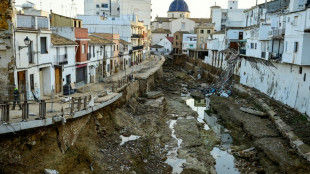

Taiwan hit by dozens of strong aftershocks from deadly quake
Taiwan was shaken by dozens of earthquakes overnight and into Tuesday that left buildings swaying, with the government saying they were aftershocks from a huge deadly quake that hit the island more than two weeks ago.
The strongest, which the US Geological Survey measured at magnitude 6.1, hit around 2:30 am (1830 GMT) followed minutes later by a 6.0 tremor.
Taipei's Central Weather Administration put them at 6.0 and 6.3, respectively.
Authorities said there were no casualties reported so far, but the non-stop shaking meant a restless night even for those in the capital Taipei about 150 kilometres (90 miles) north, where walls and glass panels rattled in swaying homes.
"I was too scared to move and stayed in bed," said office worker Kevin Lin, 53, in Taipei, who told AFP he was jolted awake by the intense quakes.
Around 8:00 am, a 5.8-magnitude tremor shook the capital as commuters made their way to work.
The series of quakes started Monday around 5:00 pm, originating from Hualien on the central east coast of Taiwan.
The mountainous county was the epicentre of a magnitude-7.4 quake that hit April 3, which Taiwan said was the "strongest in 25 years", triggering landslides that blocked roads and severely damaged buildings around the main Hualien city.
At least 17 people were killed, with the latest body found in a quarry on April 13.
In Hualien on Tuesday, a hotel building that was previously damaged started tilting at an angle overnight after the quakes, according to footage obtained by AFP.
"Please come out for your safety. Let's evacuate first OK? Anyone still inside? Please come down," shouted a firefighter to the residents of nearby buildings.
Hualien county government announced that schools and offices would be closed Tuesday due to the continuous aftershocks.
- Withstanding quakes -
In Taipei, Lin said he had seen news of the hotel in Hualien, which showed how powerful even the aftershocks can be.
"I live in a 40-year-old apartment and it really worries me whether the apartment can withstand so many earthquakes," he told AFP.
He added that while the Taiwanese public are taught what to do when a tremor hits, "it is only useful for a small quake".
"For a big one, it doesn't really matter how much quake response you're taught."
Taiwan sees frequent earthquakes due to its location at the junction of two tectonic plates.
The April 3 quake was followed by more than 1,100 aftershocks, which have caused rockfalls around Hualien.
It was the most serious in Taiwan since 1999, when a magnitude-7.6 quake hit the island. The death toll then was far higher, with 2,400 people killed in the deadliest natural disaster in the island's history.
Stricter building regulations -- including enhanced seismic requirements in its building codes -- and widespread public disaster awareness had staved off a more serious catastrophe in the April 3 quake.
A.Roth--MP




